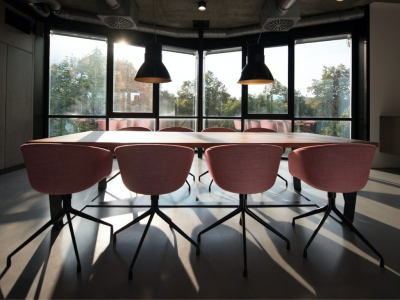Availability of goods
Nothing is more annoying than losing sure profits or, even worse, having to face the disappointment of the customer. This is the case when the customer wants to buy an in-stock product only to find that it is out of stock. Limiting or eliminating out-of-stock items should be one of the priorities on the way to increasing store sales.
SAP’s product portfolio includes the Forecasting and Replenishment module. This module can provide forecasts to calculate the proposed product demand in the distribution centre and the store. The demand can be automatically used to generate purchase orders. The forecasting algorithm uses historical sales data, with consideration of promotion data and pre-defined control parameters set for the product, the distribution centre and the store.
The implementation of such automation of the ordering process will contribute to a reduced number of out-of-stock products in the store and in the warehouse, reduce the costs related to excessive stocks and limit the human factor risk.
Goods that fit the store
Every store is unique due to the unique set of parameters that define the store: cubic volume, customer preference, fitments, personnel, etc. Even assuming that the retailer tries to copy/paste every store using the existing template, it will be impossible to copy customer preference. Depending on the surroundings of the given store, e.g., student dormitory or single-family house district, customer preference will be radically different.
Decisions on the space to be allocated to a given product category (alcohol, dairy products, bread) in a given store is the first step on the way to the full use of the store’s potential. These decisions should be made based on the sales data for the individual categories. Then, the optimum selection is made of the goods to be sold at the store, with consideration of customer preference and available space for each category. The final element required to correctly plan out the space in the store is to allocate the suitable amount of space for each product.
These activities are carried out by means of dedicated sales area management programmes integrated with the SAP system and the data warehouse. In this model, the central systems will provide product, store and sales data. The application dedicated to sales area management will be used to interpret the imported data, create planograms (visualisation of the shelf space in the store) and combine the planograms with the floor plans (placement of the individual racks grouped into product categories in the store).
After the end of the cyclical operations conducted to optimise store space, the finished visualisation can be sent to the store to make it easier for the personnel to arrange the products on the shelf. The specific visualisation for each store will also make it easier to monitor and enforce the implementation of the given layout.
Goods with optimum pricing strategy
Price management in a specific category is very complex, and, when this is done manually, it is difficult to consider all of the parameters affecting the optimum price. This is even more difficult if the given category includes a large number of products, and their prices are going to vary depending on the store they are sold at.
In response to this demand, new software has appeared on the market, which, when integrated with the SAP system and the data warehouse, enables optimum product price management. Central systems are responsible for supplying the basic data, sales history, information on sales promotions and prices of the competition. The algorithms of external applications interpret the supplied data and generate proposed product prices based on the rules defined during the configuration process and on the secret algorithms of the given software developer.
Hicron, as SAP’s Gold Partner, has many years of experience in designing, implementing and supporting solutions of the leader from Waldorff. This level of partnership guarantees the high quality of the delivered services and a team of specialists with unique qualifications. During many years of doing business with clients in Poland and abroad, the company has implemented dozens of projects.
Bridge the gap
In the USA and in Western Europe, the retail giants have already reached the peak of expansion on their primary markets many years ago. Consequently, the optimisation of the processes in these organisations had begun many years earlier than it did in Poland. If the Polish retailers are to compete on the global markets, they have to carefully consider their investments. It is necessary to quickly bridge the technological gap or, if possible, demonstrate innovation potential and, instead of copying the existing solutions, implement new, innovative ones.
“One of the only ways to get out of a tight box is to invent your way out“.
Jeff Bezos
Read the next part: Commerce 3.0. – digital revolution example of “Amazon Go”
Read the previous part: Commerce 3.0. – changes on the market and consumers awareness





